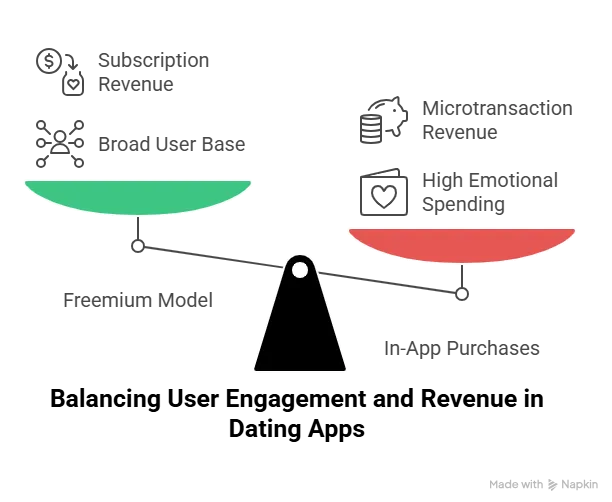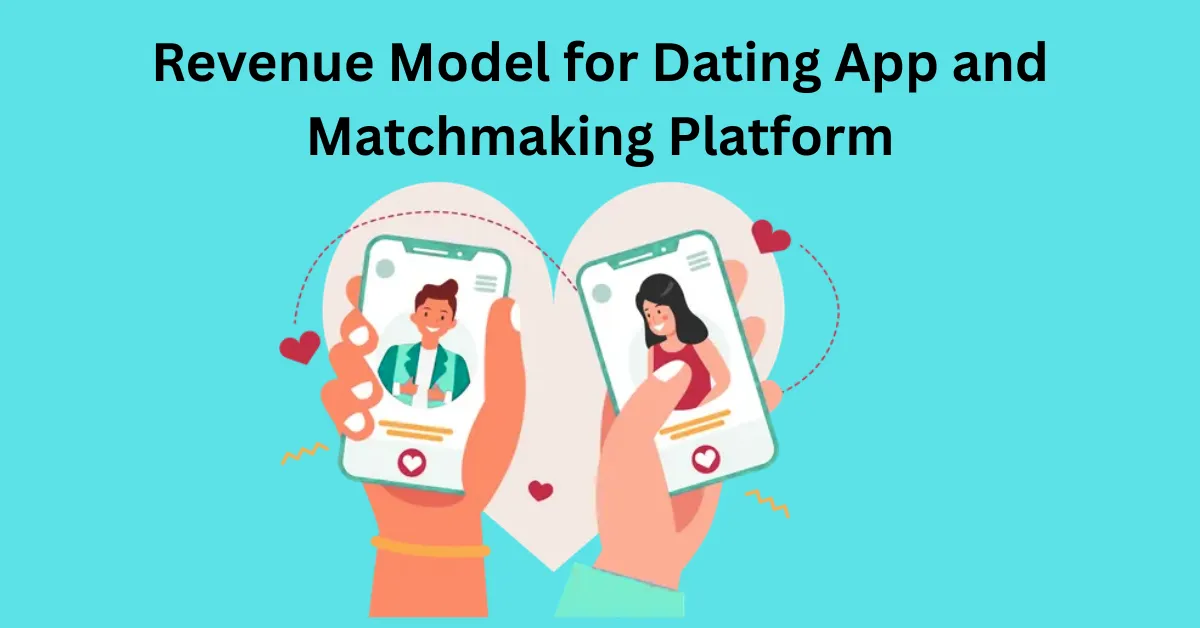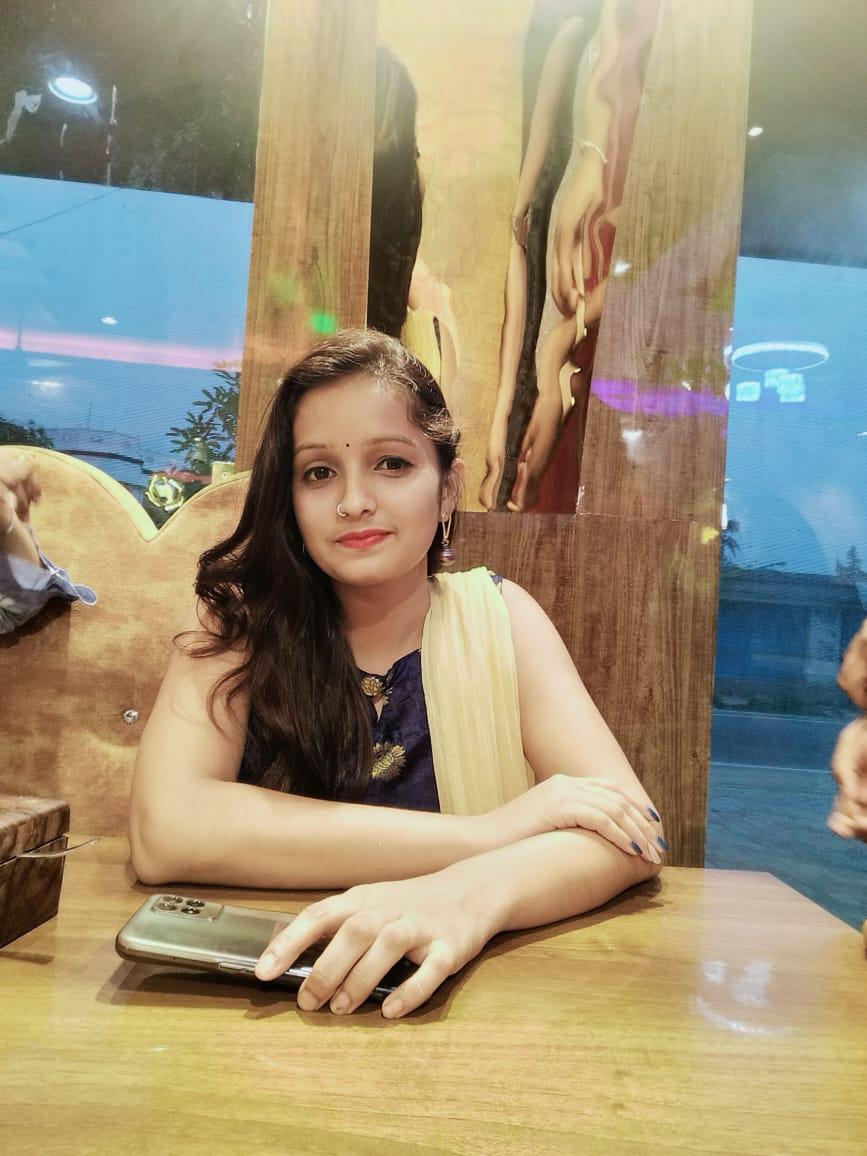Swipe left, swipe right… but if you’re an entrepreneur, you better be swiping up—on that revenue curve. Because today’s Dating App and Matchmaking Platform isn’t just about romantic connections; it’s about financial traction. From quick swipes to serious soulmates, apps like Bumble, Hinge, and every Tinder clone in between have turned the business of love into a booming tech vertical.
Here’s the truth: launching a dating app isn’t just about building a sleek MVP and crossing your fingers. Users want smart matching algorithms, slick UI, bulletproof security, and perks that feel personal. And behind all that? You need a revenue model that makes it all sustainable—without scaring users away.
At Miracuves, we specialize in building high-performance Tinder clone apps and custom dating platforms that don’t just attract users—they retain and monetize them. If you’re ready to turn chemistry into cash flow, this blog lays out the monetization blueprint that modern dating apps are using to thrive.
Why Dating Apps Are a Monetization Goldmine
Here’s a little secret—romance is recession-proof. People may cut back on streaming subscriptions or online shopping, but they won’t stop looking for love (or at least some weekend company). What’s more, dating apps cater to desire-driven behavior—which leads to high engagement and a user base willing to pay for small advantages.
Monetization in this space is emotional, experiential, and highly gamified. It’s not just about who matches with whom—it’s about who’s willing to pay for more chances.
Top Revenue Models for Dating and Matchmaking Apps

1. Freemium With Tiered Subscriptions
This is the bread and butter of dating apps. The basics are free, but if users want perks, they pay. Common paid perks include:
- Unlimited swipes or likes
- Visibility into who liked them
- Boosted profile visibility
- Advanced filters (age, distance, intent)
Example: Tinder Plus, Gold, and Platinum—all with escalating perks and price points.
2. In-App Purchases and Microtransactions
Gamification fuels spending. Examples:
- “Super Likes” or “Roses” to stand out in someone’s feed
- Profile boosts for a set duration
- Read receipts or message prioritization
These are low-cost items that add up over time, especially when users are in peak emotional mode.
3. Time-Limited Premium Trials
You give users a taste of the VIP life for 24 or 48 hours—then nudge them to subscribe. This model is conversion gold, especially when tied to peak engagement (e.g., after a match streak).
4. Ads (But Carefully)
Ad revenue can work, especially for freemium users. However:
- Keep them native and skippable
- Avoid interrupting chats or swipes
- Consider affiliate tie-ins (e.g., local events, flower delivery, romantic getaways)
5. Matching as a Service (B2B)
If you’re building a matchmaking engine with real power, white-label it. Sell your algorithm to:
- Wedding planners
- Lifestyle coaches
- Niche community sites
You’d be surprised how many businesses want plug-and-play matchmaking.
Read More : How to Start a Dating & Relationship Platform Business
Creative Monetization Ideas That Actually Work
Offline Event Monetization
Dating doesn’t have to stay on the screen. Host or partner with:
- Local speed dating nights
- Singles mixers
- Virtual first-date games
You can sell tickets, take a cut, or build brand partnerships.
Verified Badge Fees
Security and authenticity matter. Charge for:
- Identity verification
- Blue badge status
- Background checks
People pay for peace of mind, especially in a dating context.
Personality Assessments and Reports
Use psychology-based tools and charge for:
- Compatibility reports
- Behavioral insights
- Zodiac-based or MBTI match ratings
These offer value while also creating emotional stickiness.
External Source: Statista – Online Dating Market Revenue Forecast
Read More : How to Market a Dating App and Matchmaking Platform Successfully After Launch
Niche Platforms: Monetizing with Laser Precision
Niche dating apps (for vegetarians, religious groups, pet lovers, etc.) often monetize better than mass platforms because:
- Users are highly engaged
- They’re willing to pay for exclusivity
- Monetization can align with niche needs (e.g., events, forums, merch)
Pitfalls to Avoid
- Over-aggressive upselling: Users who feel pressured often ghost… your app.
- Ad overload: One badly timed pop-up can kill the mood—and retention.
- Ignoring user safety: Every incident reduces trust and revenue potential.
Trends to Watch
- AI Matchmaking: Smart algorithms that adapt to swipe behavior
- Voice and Video Profiles: Higher engagement = higher monetization potential
- Social-style Dating: Group swiping, wingman features, live speed dates
The dating experience is evolving—monetization must evolve with it.
Read More : Best Tinder Clone Scripts in 2025: Features & Pricing Compared
Conclusion & Final Thoughts
Dating platforms are where technology meets chemistry—and commerce. By building a layered, emotionally tuned revenue model, you’ll attract not just users, but committed, paying ones. Whether it’s premium perks or offline add-ons, monetization in dating is all about enhancing experience without breaking the magic.
At Miracuves, we help innovators launch high-performance app clones that are fast, scalable, and monetization-ready. Ready to turn your idea into reality? Let’s build together.
FAQs
Still have questions about revenue models for dating platforms? Let’s clear them up.
Do users really pay for dating features?
Yes, especially for anything that increases their chances or improves visibility. Love (and dopamine) is a powerful motivator.
Is freemium the best model?
It’s the most popular, but combining freemium with microtransactions creates stronger revenue flow.
What’s the most profitable add-on?
Profile boosts and super likes tend to perform well across platforms. Subscriptions provide recurring revenue.
Can niche dating apps make money?
Absolutely. Their specificity often leads to higher engagement and more loyal users.
Are ads okay in dating apps?
Only if subtle. Users are sensitive here—ads should never interrupt or feel intrusive.
Related Articles
- How to Develop a Dating and Matchmaking Platform App That Users Love
- Dating App Development: A Comprehensive Guide to Building Your Own Platform
- Building Connections: How to Develop a Hinge Clone for Your Dating App
- Pre-launch vs Post-launch Marketing for Tinder Clone Startups
- Top 5 Mistakes Startups Make When Building a Tinder Clone








